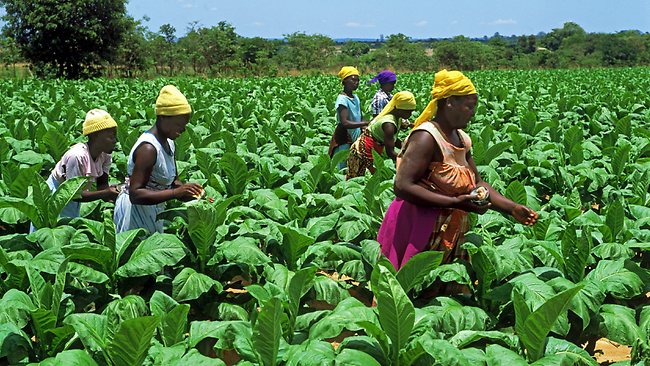Kutsaga cautions against Fusarium rot in tobacco
KUTSAGA Research has warned farmers against Fusarium wilt and root rot disease (FWRR), a soil borne fungal disease which can cause significant yield losses in tobacco.
According to the institute, surveillance activities have noted an unusually high prevalence of Fusarium wilt and root rot.
“Worldwide, the FWRR causes an estimated 20 percent yield loss but in Zimbabwe, previous outbreaks of the disease were sporadic and caused negligible yield losses,” said Kutsaga.
In an advisory, Kutsaga disclosed that FWRR was caused by soil borne ascomycetous fungi belonging to the genus Fusarium with at least seven of more than 18 species in Zimbabwe reported to be infecting tobacco.
A recent study by Kutsaga has revealed that the highly virulent and cosmopolitan F. falciforme is now widespread in Zimbabwean tobacco and potatoes.
Typical symptoms of the disease include yellowing, drying and death of leaves, followed by stunting, defoliation and plant death.
“In some instances, these symptoms are vertically distributed on one side of the plant or even one side of the leaf mid-vein. Vein-clearing may also be observed on younger leaves, with simultaneous drooping of older lower leaves,” said Kutsaga.
The Kutsaga advisory note further said a chocolate-brown or purple-to-brown discolouration of the vascular tissues develops that may run from the basal part of the stem, taproot and lateral roots to the top of the plant.
After some time, the discolouration becomes visible on the exterior of the green stalk and this vascular discolouration can be used for disease diagnosis.
Growers are advised against poor sanitation practices like retaining infected stalks from previous seasons as well as movement of contaminated water and soil.
The FWRR disease thrives in warm, humid conditions, particularly in sandy-loam soils and gets severe under tobacco mono-cropping.
“Root damage by root-knot nematodes and soil insects also exacerbates the problem by creating wounds used for infection. Temperature around 28 degrees Celsius and relative humidity above 85 percent enhance disease development, “ said Kutsaga.
Farmers are advised to follow an integrated approach to manage the disease by adopting practices such as crop rotation, chemical control, nematodes and soil arthropods control and enhanced sanitary measures.
Kutsaga revealed that the fungal disease is potentially devastating to tobacco production in Zimbabwe and they had activated their research prowess to test several fungicides for use against the disease which will be availed to the industry in the next season.
“We have also initiated a breeding programme to develop tobacco varieties that are resistant to FWRR and black shank.
“We encourage farmers to monitor their crop for typical FWRR disease symptoms,” Kutsaga advised.
Government came up with the tobacco value chain transformation plan (TVCTP) in 2021 which seeks to achieve a US$5 billion industry through the sustainable production of 300 million kilogrammes of tobacco annually, increase localisation of tobacco funding, productivity, value addition, beneficiation and export of cigarettes.
All these initiatives are meant to contribute to gross domestic product (GDP) growth, foreign currency generation, employment creation and raising household incomes pursuant to the Vision 2030 goal of a prosperous and empowered upper middle-income society.
-herald










